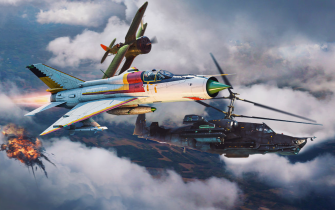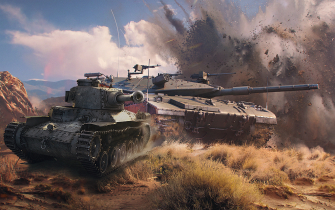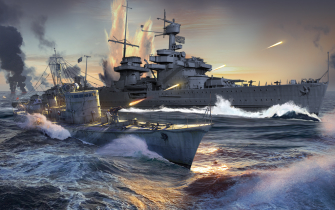|
|
| [Update] "Alpha Strike"
|
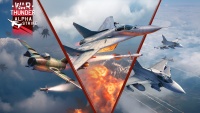
|
Meet War Thunder’s first major update of 2024! We’ve added several interesting ground vehicles, some of which include five rank VII premiums, the formidable Fox light-tank, to the interesting looking 120S and Zerstörer 45. Hungarian aircraft have now made their way into Italy’s tree, where you’ll be able fly a range of fully-capable aircraft in air and ground battles. The nimble Alpha jet has arrived for Germany and France, plus the warmly welcomed Wessex for Britain. Additionally, IJN Mutsu — featuring the largest guns in the game — is now ready to sail for Japan. North Holland is a new ground forces map, featuring a town and plain terrain, perfect for different combat engagements. And lastly, you can also enjoy several Roadmap additions, one of which is an aircraft fuel slider!
|
| Battle Pass: Season XIV, "Airborne General"
|
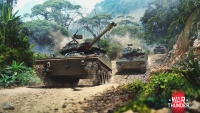
|
Meet Season 14 of the Battle Pass! We’ve got a new set of decals, decorations, a profile icon and vehicles lined up for you this season! See the full list in the Battle Pass tab in the hangar, or check them out on our Wiki.
|
| [Update] "Air Superiority"
|
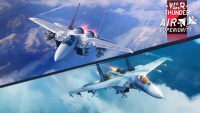
|
We’re ending 2023 in style with the awesome Air Superiority major update. Top-tier jets have been added to several nations, some of which include the F-15, the Su-27 and J-11, the Mirage 4000, plus the JAS39. We’ve introduced Rank VIII for ground vehicles, and subsequently new tanks: M1A2 SEP2, Leopard 2A7V, T-90M, VT-4A1, Strv 122B+ and Challenger 3 (TD)! The USA gets the brilliant USS Roanoke and a few other ships come in for other nations, while Volcano Valley is here for aircraft, set in the beautiful peninsula landscapes of Russia. The ability to use universal backups while in battle and tutorial missions for using aircraft missiles have also been added, and we’ve reworked all types of fire graphics for vehicles and burning buildings to make them look better in general.
|
| [Update] "Kings of Battle"
|
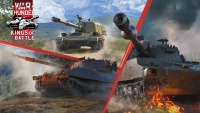
|
In this update, 3 formidable aircraft join the top ranks, including the F-111A which breaks records regarding its payload! Every nation in the game has received at least one ground vehicle, some of these include the M109 “King of Battle” for multiple nations, the long-awaited Type 81 (C) for Japan, the Vickers Mk.11 for Britain and the incredibly unique Object 775 for the USSR! The MH-60L DAP and Spike-capable helicopters have also arrived, and in addition to this, premium Battleships for Britain and Japan. Several new mechanics have been implemented, as well as the very interesting Flanders map, which features an all-new era adaptive format.
|
| Battle Pass: Season XIII, "Tropical Storm"
|
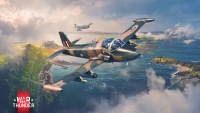
|
There’s a storm brewing! New Zealand’s Strikemaster Mk.88 flies over the jungle, wreaking absolute havoc just like a tropical storm. This jet-powered attack aircraft is the grand prize this season, and is a variant created by British company BAC specifically for New Zealand’s Air Force. To receive Battle Pass rewards, you’ll need to regularly log into the game and complete tasks and challenges. Each level of the Battle Pass will earn you a prize, be it a player icon, loading screen, title, decals, decorations, or 3 brand new premium vehicles!
|
| [Update] "Sons of Attila"
|
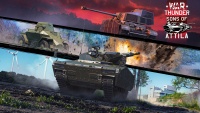
|
A vast amount of vehicles, fixes and anticipated Roadmap additions have now been implemented! Flagship jets: F-16C Block 50, Barak II and MiG-29SMT, plus jets for other nations. Italy has gained the Hungarian branch, which includes 11 ground vehicles starting from the Csaba and ending at the KF41, as well as 3 helicopters. The first South Korean vehicle, the VIDAR — which arrives as an export variant used by Norway — also comes to the Swedish tree! The visual effects of wind, smoke and ammo detonations plus more have also been improved, as well as a rank VI Bluewater and 3 premium Battleships have arrived. Two new maps, including the return of "Test Site — 2271", are also here.
|
| Battle Pass: Season XII, "Armour Breaking Ambusher"
|
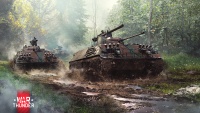
|
For many types of vehicles that aren't equipped with super sturdy armour, attacks from the flank and ambushes are one of the main ways to achieve victory. The SPz 12-3 LGS, the main prize of the new War Thunder Battle Pass season, is one of such vehicles — and that's why this season is called "Armour Breaking Ambusher"! To receive Battle Pass rewards, you need to regularly log into the game and complete tasks and challenges. Each level of Battle Pass will earn you a prize, be it a player icon, a loading screen, a title, decals, decorations, or new premium vehicles!
|
| [Update] "La Royale"
|
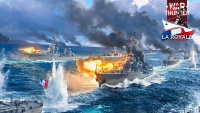
|
The beginning of the Closed Beta Test for the French Naval forces, new and updated graphical effects for flares, afterburners, rockets, and missiles along with new hit marks on ground vehicles. More than 50 new or updated vehicles. Amongst them 14 new ships for the French Navy! But sailors are not the only ones to find something for themselves here! The Mighty F-14B, three different Sukhoi jets, the unusual M1 KVT tank or the first tank from India in WT - Vijayanta! Two new locations, fortifications mechanics, new weapons for aircraft and much more awaits you in La Royale update!
|
| Battle Pass: Season XI, "Her Majesty's Hussar"
|
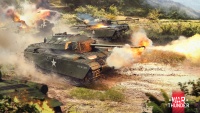
|
For hundreds of years, hussars were part of the cavalry, but technical progress in the 20th century forced them to ditch horses for tanks — which means they have a place in War Thunder! The eleventh Battle Pass season that will launch very soon is called "Her Majesty's Hussar" for a reason: its main prize, the Centurion (in its later modification), was used by hussar squadrons in the Korean War when Queen Elizabeth II was crowned. To receive Battle Pass rewards, you need to regularly log into the game and complete tasks and challenges. Each level of Battle Pass will earn you a prize, be it a player icon, a loading screen, a title, decals, decorations, or new premium vehicles!
|
| [Update] "Sky Guardians"
|
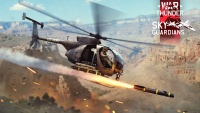
|
The first units for the French naval tree, new and updated graphical effects and data structure optimization along with ejection seats for selected modern jets. Amongst the 43 new as well as updated vehicle models, one can't help but mention the real behemoth - the Char2, the agile AH-6M "Little Bird" helicopter or the first French light cruiser; Duguay-Trouin! In addition to all this, the winter version of the location "Seversk", a new location for fans of avionics - Pyrenees, and as always, many improvements and fixes! Let's welcome the "Sky Guardians" update!
|
| Battle Pass: Season X, "Royal Guard"
|
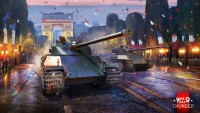
|
Guards, to arms! The 10th season of Battle Pass, named Royal Guard, begins in War Thunder very soon! By logging into the game and completing tasks and challenges you earn points that unlock Battle Pass levels, and each level earns you a reward! Among them — unique premium combat vehicles, decals, 3D decorations, profile icon, a loading screen and a title!
|
| [Update] "Apex Predators"
|
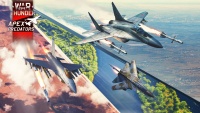
|
Brand new Rank VIII 4th generation aircraft with the iconic trio of the F-16, the MiG-29 and the Tornado! A selection of over 40 new and updated models of aircraft, ground vehicles, and naval vessels. New models for naval crews with reworked voiceovers for naval events, drop tank mechanics, two new locations and as always, a long list of bug fixes and smaller updates and changes! Prepare yourself, Apex Predators have arrived in War Thunder!
|
| [Update] "Fire and Ice"
|
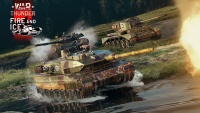
|
New, Finnish branches for the Swedish tech tree - both Aircraft and Ground vehicles, including the Leopard 2A6! More than 50 new and updated vehicles with the long awaited American M1A2 SEP with the TUSK modification, SPAA ТОR-М1 missile and the iconic Fusō Japanese battleship! Apart from all this, two new locations: "Arctic" and "Rocky Canyon" and as always, a long list of bug fixes and smaller changes! Prepare yourself for the "Fire and Ice" update!
|
| Battle Pass: "Smell of Victory"
|
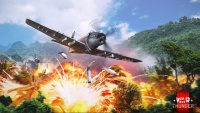
|
New prizes await their future owners. The ninth season of Battle Pass, called "Smell of Victory", is starting in War Thunder! Complete Battle Tasks and Season Challenges to receive unique premium combat vehicles, decals, 3D decorations, profile icons, a loading screen and a title!
|
| [Update] "Drone Age"
|
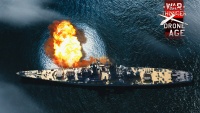
|
Brand new scout and strike drone mechanics, a Chinese helicopter tech tree and new visual effects when destroying ground and naval vehicles! More than 40 new and updated vehicles including two iconic Su-25 models, the long requested Skink, the mighty USS Alaska or the first Turkish machine in War Thunder - a T129 ATAK attack helicopter and two new locations: "Golden Bay" and "Pradesh"! Additionally, new models for tank crews for Japan and Sweden, aircraft engine fire extinguisher mechanics and a long list of bug fixes and new features awaits you! Join us in the new "Drone Age"!
|
| Battle Pass: "Field Testing"
|
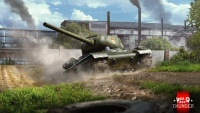
|
New prizes await their future owners. The eighth season of Battle Pass, called "Field Testing", is starting in War Thunder! Complete Battle Tasks and Season Challenges to receive unique premium combat vehicles, decals, 3D decorations, profile icons, a loading screen and a title!
|
| [Update] "Danger Zone"
|
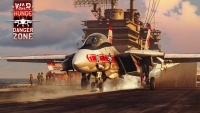
|
The long awaited F-14A Tomcat, an Israeli helicopter tech tree, the first Chinese helicopter and a new type of bomb - with napalm! Two brand new locations, updated Sun City map, dozens of new vehicles and few updated models for old legends. Additionally the highly anticipated rewind functionality for replays and a long list of bug fixes and new features awaits you! Join us with a ride into the "Danger Zone" Update!
|
| Battle Pass: "Armored Elephant"
|
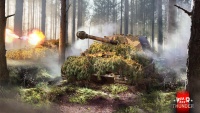
|
Time for an upgrade, soldiers. We’re opening the 7th season of the War Thunder Battle Pass! Open new stages and get unique premium combat vehicles, as well as tons of prizes: decals, 3D decorations, profile icons and a unique loading screen and title!
|
| [Update] "Wind of Change"
|
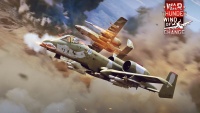
|
Start of the Israel Ground Forces Closed Beta Test, update for Dagor Engine to version 6.5 along with many new graphic features, ultra high resolution texture pack, new machines and more awaits you in the "Wind of Change" Major Update!
|
| Battle Pass: "Firepower"
|
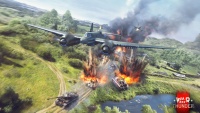
|
Get ready for the new season of the War Thunder Battle Pass! Open new stages and get unique combat vehicles, as well as tons of prizes: decals, 3D decorations, profile icons and a unique loading screen and title!
|
| [Update] "Winged Lions"
|
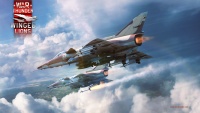
|
A new in game nation and Air Force tree with Israel, reconnaissance aircraft for naval battles, the influence of breeze in the game environment, new locations, many new vehicles and a long list of bug fixes awaits you in the "Winged Lions" Major Update!
|
| [Update] "Ground Breaking"
|
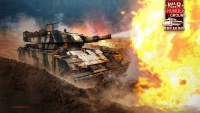
|
The latest major update brings many improvements to all areas of the game! Including new maps, visual effects, and various new vehicles - and let's not forget our new game nation: Israel! The biggest feature coming in this update though is of course terramorphing: bombs, large-calibre guns and tanks wielding dozer blades can now modify and shape the terrain and alter the course of battle!
|
| Battle Pass: "River Hunter"
|
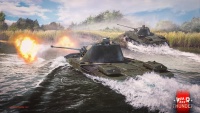
|
Get ready for the new season of War Thunder Battle Pass! Open new stages and get unique combat vehicles, as well as tons of prizes: decals, 3D decorations, profile icons and a unique loading screen and title!
|
| [Update] "Direct Hit"
|
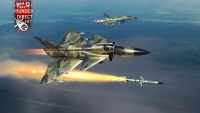
|
This update brings a wealth of new vehicles and improvements to War Thunder, including such legendary aircraft as the MiG-27M and the Swedish Viggen! New guided bombs are making their way into the game, along with many additional features - two new maps, an updated test drive, a fire control system for ships, new visual effects, Nvidia DLSS 2.2 and so much more!
|
| Battle Pass: "Fearless Voltigeur"
|
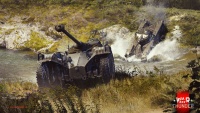
|
Get ready for the season IV of the War Thunder Battle Pass: "Fearless Voltigeur"! Open new stages and get unique combat vehicles, as well as tons of prizes: decals, 3D decorations, profile icons and a unique loading screen and title!
|
| [Update] "Red Skies"
|
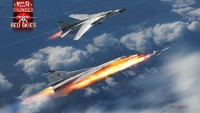
|
Rank VII for aviation, brand new commander's sight for selected vehicles, naval shell chase camera and almost 30 new machines are joining the game! Two new locations, new effects for the nuclear blast, updated sounds, and much more!
|
| Battle Pass: "Strength Athletics"
|
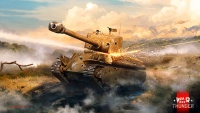
|
Battle Pass, Season III "Strength Athletics" is now live! See the tons of new and unique prizes and rewards now available!
|
| [April Fools] Bob Semple is here!
|
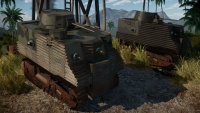
|
The legendary Bob Semple tank, come and experience it now!
|
| [Update] "Ixwa Strike"
|
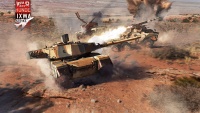
|
A new line of South African ground forces, the first Variable Swept Wing jet and over 30 new vehicles are joining the game! New location, tactical air-to-surface missiles and a pilot HUD along with new graphical effects, gunfire sounds for aircraft, and much more!
|
| [Update] "Hot Tracks"
|
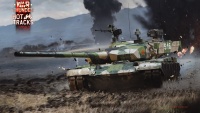
|
New visual elements comes alongside the newest vehicles in update "Hot Tracks", including the introduction of the Italian helicopter tech tree!
|
| Battle Pass
|
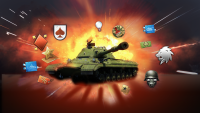
|
Battle Pass is the seasonal event during which you will earn progress points and use them to open new levels. Each opened level brings you a valuable reward, from Silver Lions and boosters to exclusive season prizes: decorators, profile icons and premium vehicles.
You can access the "Battle Pass" window through the promo block on the right side in the hangar window.
|
| "Collections"
|

|
We are pleased to introduce a new mechanic to the game - "Collections"! Collections combine thematic decals and decorations, for example those related to one event. You have a full collection? Get the special award!
Read more in the article.
|
| World War. Season: Road to the West
|
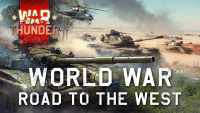
|
The third season of World War begins on July the 1st and will be available until July the 20th! The tensest years of the Cold War are presented in two new scenarios. Players will take part in the Yom Kippur war and be able to battle for supremacy in the Fulda Gap using alternative history. We have updated articles about helicopter missions, and also added detailed articles about the new scenarios and the new season.
|
| User-made sighting reticles
|
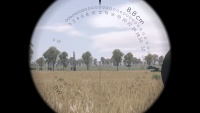
|
Now you can create custom sights for many vehicles and even whole vehicle classes. Refine your universal sight or one that fits multiple vehicles based on the information in the reworked War Thunder Wiki article.
|
| [Update] "Starfighters"
|
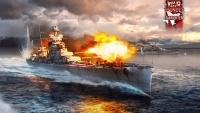
|
War Thunder: Starfighters, a brand new major update that introduces the Italian Fleet, Japanese helicopters, several iconic jet aircraft, including the famous F-104 family! New ground vehicles, reworked maps as well as many improvements, fixes and a plethora of other surprises awaits!
|
| Matchmaker
|

|
We have significantly updated and simplified the article regarding matchmaking - one of the most important mechanics that creates game sessions for you the players. If you don't know how it works yet, it is highly recommended that you read it right now.
|
| The Landkreuzer P. 1000 Ratte, come and play it now!
|
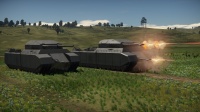
|
The Landkreuzer P. 1000 Ratte is available to play now, really, it's not a joke!
|
| [Update] "Viking Fury"
|
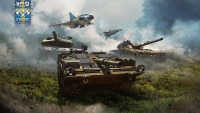
|
The ground tree of the Swedish tech tree have been unleashed onto War Thunder! Additionally, new jets and aviation mechanics have been added for pilots to utilize!
|
| [Update] "Northern Wind"
|
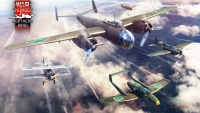
|
The Swedish makes their play with a full aviation tech tree in War Thunder, as well as their first threads on the ground with the new ground tech tree!
|
| [Update] "Shark Attack"
|
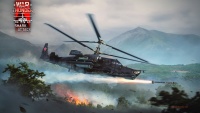
|
War Thunder introduces a variety of new vehicles ranging from Russian helicopters to the first rank V naval vessels and the introduction of the Swedish tech tree for aircraft.
The update also opens the Chinese tech tree to all players.
|
| War Thunder: Wiki Share Program
|

|
War Thunder Wiki is proud to announce the Wiki Share Program for players to be rewarded for their contributions on the Wiki! Please visit the page and announcement page for more details!
|
| [Update] "Night Vision"
|
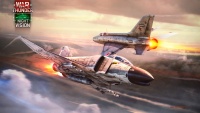
|
War Thunder goes dark in Update 1.91 "Night Vision" on 11 Sep 2019! See the new update page on the wiki for all the buzz going on in this update!
|
| War Thunder Wiki: Short Guides Competition
|

|
A well-trained ally doesn’t make obvious mistakes in battle. They are an asset, and instead, will aid you in your path to victory. How might one hope for a well-trained ally? Well, your ally’s best teacher could be you after you’ve participated in the short guides competition from the War Thunder Wiki team!
|
| [Update] "Imperial Navy"
|
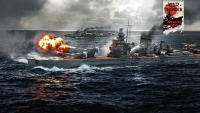
|
The Imperial Japanese Navy of the Pacific seas have finally appeared in War Thunder in Update 1.89 on 29 May 2019!
|
| Economy Update
|
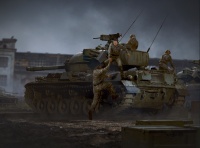
|
In 23 April 2019, the long-awaited economy update has gone live!
Research points, purchase costs, repair costs, and shell costs have been changed!
|
| [Update] "Locked On!"
|
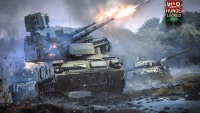
|
On 12 March 2019, Update 1.87 "Locked On" has hit War Thunder!
Introducing Rank VII ground vehicles with the likes of M1A1 Abrams and the Leopard 2A5! This comes along with the growth of Rank VI aircraft, including the new fastest dart in the skies, the Mitsubishi T-2, and French helicopters. Fleet also earned new cruisers and destroyers for use!
Perhaps the most exciting new mechanic introduced is the radar! Allowing the detection and tracking of aerial targets for elimination!
|
| [Event] Sea Voyage
|
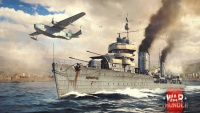
|
Pilots and Tankers have already shown their skills in War Thunder's festive adventures. Now our brave sailors will go on a "Sea Voyage" in which pilots and ship commanders will be able to win premium vehicles and other prizes by completing the tasks in the combined naval battles.
This event will last from 15:00 GMT on the 21st of February until 07:00 GMT on the 11th of March.
|
| How can you get premium vehicles? Warbonds!
|

|
The February assortment of Warbond shop items are now available! Fulfill Battle Tasks, earn warbonds, improve your shop level and unlock rewards!
This assortment will be available until the 28th of February!
|
| Update 1.85
|
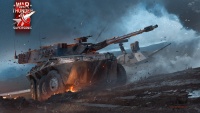
|
Update 1.85 is here on 17 December 2018, introducing two new aspects into War Thunder
The Italians now have their own ground forces tech tree!
Supersonic jets are now in the game for Rank VI aircraft! Starting with the F-100D in the Americans, MiG-19PT for the Russians, and the Javelin for the British!
|
| Fleet
|
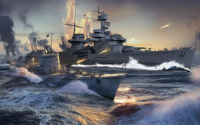
|
Fleet — Witness the release and activation of the naval tree in the War Thunder Wiki!
|
|


